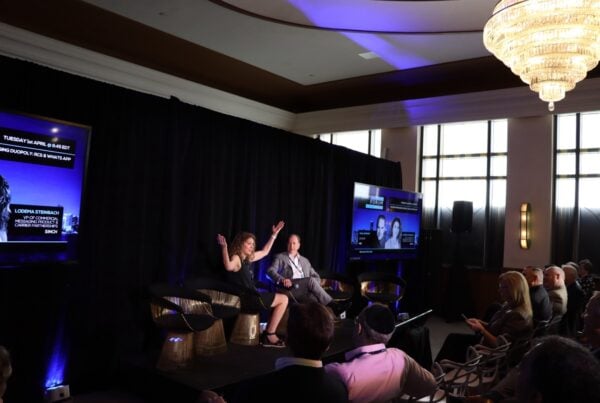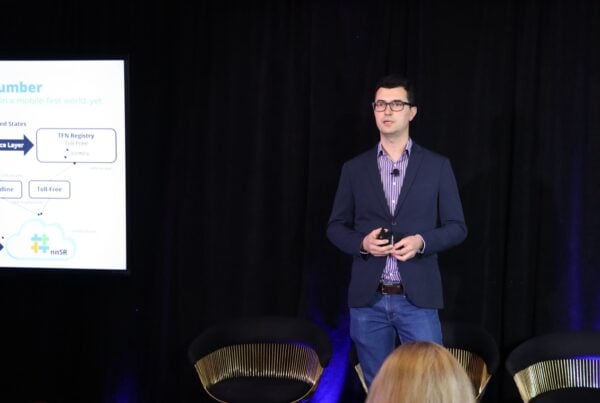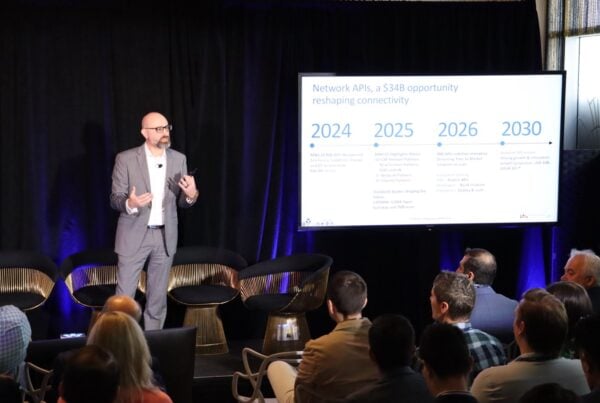Rajeev Rajagopal, Senior VP – Enterprise Mobility at Robosoft Technologies here takes a detailed look at just a few of the mobile fintech products and services that are showing traditional banking how it should be done.
When it comes to financial services customer experience and the ease of doing transaction are of paramount importance to not just acquire customers but also to retain them.
However, do traditional bank executives recognise this fact?
The short answer is NO!

Capgemini Consulting in collaboration with EFMA conducted a study where the researchers asked customers to rate the most important reasons why they are using financial products coming from fintech companies. In parallel – they asked banking executives to do the same.
The results show a complete disconnect between what consumers want and appreciate about fintech and what banks think consumers appreciate about fintech products.
As per the findings, contrary to 80% of consumers, only 40% of banking executives believe good service or experience is critical to fintech’s rise in popularity. Also, three key consumer reasons for choosing fintech over banks did not even make it to the banking executive’s list of reason for using fintech: faster service, more features, and lack of service by the primary bank.

Most banks have put complex processes in place to cater for virtually every use case and customer complaint imaginable. But what they did not do, is, integrate the various components into a seamless experience.
With the growing popularity of Fintech solutions, it looks like that Fintech enterprises (and some technology savvy banks) have broken the code of offering best user experiences to their customers.
Here are some UX best practices that most of these enterprises use to keep their customers happy. Traditional banks will need to observe what fintech and prudent banks are doing right and implement these learnings in order to survive in a digital-only world.
Integrated products & services
Most of us use a variety of financial apps to manage monies. However, with multiple apps, it becomes challenging to keep a tab on all the expenses, and it also becomes tiring to jump from one app to another to manage finances.
 Mint.com has been able to solve this problem by offering an integrated solution to manage all your finances in one place. This is an excellent example of a fully integrated product which combines, cash, credit cards, loans, investments, real estate, budgets, notifications and recommendations, all in one simple to use dashboard. The awesome experience has lead the company to reach a user base of 20 Million in just 11 years.
Mint.com has been able to solve this problem by offering an integrated solution to manage all your finances in one place. This is an excellent example of a fully integrated product which combines, cash, credit cards, loans, investments, real estate, budgets, notifications and recommendations, all in one simple to use dashboard. The awesome experience has lead the company to reach a user base of 20 Million in just 11 years.
Another example of providing an integrated solution beautifully is YES Bank’s mobile app YES Mobile 2.0. YES Mobile 2.0 offers an omnichannel experience across all digital platforms. Further, equipped with innovative features like one-touch bill payment, speech to text capabilities, easy transfer of money to phone book contacts, Facebook friends and Twitter followers etc., the app scores high when it comes to being an innovative and user-friendly app.
Personalized recommendations
The digital boom has skyrocketed customers’ expectations. Today’s digitally savvy consumer expects a personalized experience with every digital interaction they have with a brand.
Credit Karma sets a wonderful example for financial services, of personalization done right. Credit Karma is a simple credit history monitoring tool where users will receive personalized recommendations based on their credit reports, credit card usage and other factors.
What is very interesting – and smart – for Credit Karma is that while offering these suggestions they also inform their users of their odds of acquiring a new line of credit – credit card, loans, mortgages and more. And most importantly, the user experience is clean and easy to follow.
Credit Karma leverages both business rules and UX best practices to create one of the most delightful experiences from a user point of view. For every recommendation – Credit Karma gives the user the approval odds, the annual fees and other terms, allows the user to start the application process or read more about the fine print for each offer.
Effortless digital savings
When it comes to financial products, nothing can make your consumers happier than offering them a solution which can help them maximise their savings. Aditya Birla Group’s MAXIT @ My Universe is one such solution.
Aditya Birla Group has businesses across verticals like retail, fashion, telecom, finance etc. They noticed that their customers carry most of their transactions through cards. However, they are not fully utilising the rewards and offers available to them. The MAXIT app was launched to help customers save more money every time they spend through their credit/debit cards. This app helps users keep track of all their spends, discover best offers and use the best card for a purchase.
The beauty of this app is the ease of use. For banking institutions, they realize that ease of use is important, but this app really drives that home. Without even trying, it is able to recommend the best deals to save users, and that creates satisfaction. Banking institutions can definitely take a page from this book and help customers optimize card usage and other features for heightened customer satisfaction and loyalty!
Speed of service
Speed of service is one of the most important criteria on why customers prefer fintech products. Some banks like the Citibank have understood this and have addressed this need of the customer in various ways. E.g. Citibank’s mobile app helps consumers get the most relevant account data without even logging in. The mobile app allows users to get a glimpse of their account simply by firing the app.
Further, banks like American Express and Fintech enterprises like Credit Karma, Paypal etc. use Touch ID finger print sensor for authentification. Touch ID is a great and speedy way to help people get to their financial information faster. As Touch ID grows in popularity as an authentication protocol, banks who do not use it risk being seen as laggards by customers by not adopting a commonly used user experience practice.
Seamless digital payment option
According to a Forrester report, mobile payments will triple by 2021, growing at a 20 percent annual compound growth rate each year. With digital payments gaining popularity, it is critical that banks add options of digital payments to their online offerings.
Apple Pay is one of the simplest digital payments solution one can hope to create. Apple Pay works by double tapping the home button. It then pulls up the Wallet application allowing users to pay at different retailers with the default card on file.
A large number of US banks still do not allow iOS customers to add their credit card to Apple Pay. For banking institutions who hope their card becomes the “go to card” in the wallet, it is important to add mobile payments to their digital portfolio. Even if banks do not integrate a mobile payment solution like Apple Pay to their digital offerings, they must try to allow for mobile payments within their mobile application.
Instant settlements
One of the reasons financial experts are excited about blockchain technology and its future is the fact it allows for instant settlements vs the current 2-3 days wait time to reconcile the ledger with the payment made. American Express is one of the few companies in the financial sector which allows for payment settlement to occur immediately.
As soon as Amex users submit a payment on the website or the mobile app, their available balance and amount due are reconciled on the spot. That gives users an instant gratification with regards to leveraging Amex products and shows how the company is invested in making it right by the user.
Location-based services: seamless ATM/ branch locator integration
There are very few recurring tasks that users of banking products would need to complete on an app on a recurring basis like checking the balance of a card, making a payment or looking at recent activity. Another use case is locating a nearby branch to complete a specific task.
YES Bank makes this task incredibly simple and modern, by using Augmented Reality to help locate nearby ATMs and branches. Not only is this convenient, but also fun for users!
YES Bank allows their users to easily locate a branch or ATM with a single tap. Not just that, it also displays relevant offers based on the users’ geo-location. This is an astoundingly simple example of a user experience that is entirely customer focused and deserves mass adoption among the financial services companies
SmartWatch Compatibility
These days, everything is about speed. How fast can I get something done and move onto the next task? Motilal Oswal, an online share trading company got this concept and acted on it. What is quicker than looking at your watch and being able to check your investments. With the app, users don’t even need to pull out their phone; it’s that fast.
With the SmartWatch App, this company is changing the game so investors can monitor stocks far easier than before, keeping afloat with the latest in the market and being able to make quicker decisions.
With this app, not only is the company filling a need, but creating customer satisfaction and engagement. This is a win-win for all sides, and something banking institutions need to take a note from because filling a niche for quick access benefits not only the customer but also the bank when their product has high engagement!
In Conclusion
User experience is of critical importance to why customers are running in flocks from the traditional banking experience. The World Fintech Report 2017 shows just how popular fintech alternatives have become in such a short period (five years).
The graph above shows a steady transition from traditional banking products to non-traditional fintech solutions.
At its core, fintech products succeed because they take a user-centric approach to designing their products. They use best UX practices, compete for simplicity and beautiful designs and make the use of their digital offers as frictionless as humanly possible. Collectively, these 10 user experiences are helping customers get to the information they need faster so that they can quickly return to whatever they were doing before firing up their banking app.
And that’s the standard every bank should live up to if they want to stay relevant in this new day and age.
This post originally appeared on the Robosoft website and is reprinted with kind permission.
Want to be featured on the MEF Minute?
The MEF Minute is an award winning blog that provides a cross-ecosystem and international perspectives on all things mobile. With contributions from MEF’s members and other industry experts it is a dedicated global news resource and thought leadership platform.
We welcome contributions from members and non-members across a range of formats including opinion pieces, industry views, stats, videos and infographics. MEF Minute offers a 360 look at any given topic impacting the mobile ecosystem whether that be from a MNO, enterprise, developer or provider perspective.









